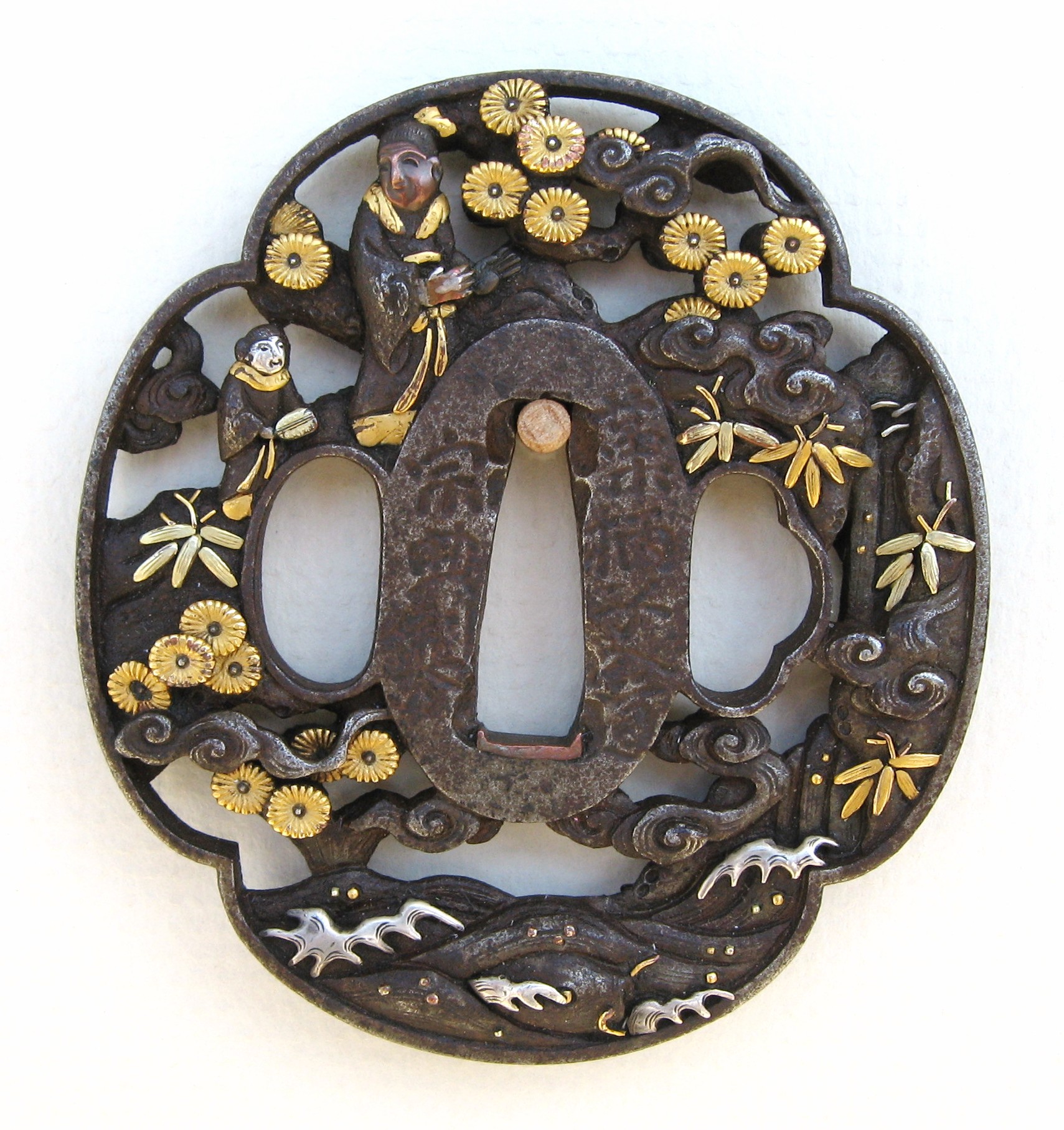|
The Japanese aesthetic does not tolerate works of dissimilar quality from the hands of an accomplished artist: "In the West, a master might tolerate an inferior work. In Japan, however, a master would have destroyed anything but his finest creations in order to ensure continued employment by a samurai, who would not favor anything less." "A master tsubashi would not put his name to an item if he were not completely satisfied with it, even if it were executed by the most skilled pupils." To a great extent reticence on questions of authenticity in tsuba is rooted in the very origins and nature of the art itself. While most Japanese art is utilitarian, a social distinction existed in Japan before the coming of the 19th century, which were the pursuits of the samurai class and aristocrats. Because they were craftsmen, many of the early tsubashi tended to forge the same designs repeatedly. Some acknowledged masters attracted pupils, and Japanese artistic conventions sometimes allowed pupils whose work was of high quality to sign with the go or art name of an admired master, while a master might sign the work of a pupil with his own go as a mark of approval. Emulation was a higher virtue than originality, and artists of high merit attracted scores of followers and imitators, even within their own life times, resulting in large numbers of tsuba of different origins and varied quality that bear signatures.
The ownership lineage (provenance) of a tsuba is for some collectors a comforting factor, although it is an entirely unreliable assurance of its genuineness. Great collectors were not invariably very discriminating. Pieces attributed to master tsubashi illustrated in the catalogs of the classical Caldwell, Rosin, Behrens, and Bauer collections show a wide range of qualitative differences, and such differences are even more apparent in the sales catalogs of important collectors. It seems somewhat perplexing that one would receive assurance of the authenticity of a tsuba because it was formerly owned by an important collector or by a number of important collectors whose tastes may not have been always superior to ones own. Age, apart from signature, is another assurance of legitimacy. An unsigned early 16th century Kyoto Shoami school tsuba is by definition authentic. Later 18th century pieces that bear signatures (Soten) that are not accepted as valid are often granted a high degree of authenticity because they are fine school pieces or are good copies.
"Buy with the eye, not with the ear," "the only 'genuineness' about which one must be satisfied is that a tsuba be genuinely old and genuinely good." These are allowable criteria. Unfortunately, they are considerably undermined by the demands of the marketplace, where the accepted signature of a master tsubashi on a tsuba will almost certainly assure high prices, at times seemingly regardless of aesthetic quality. In the end, individual collectors must determine how much confidence they will place in the experience of the "experts" and their often conflicting judgments about age, signatures, and styles. Collectors must also develop a feel for what is right, that is acquired only through experience, and tells them about what is genuinely old and genuinely perfect."
 
Elliott D. Long
Shibui Swords and Tsuba
12/01/2013
|

